Knowledge and Attitude of General and Specialist Dentist in Pediatric Dentistry - A Pilot Study in Odisha, India
Citation: Acharya S. Knowledge and Attitude of General and Specialist Dentist in Pediatric Dentistry-A Pilot Study in Odisha, India. Ann Med Health Sci Res. 2018;8:35-38
This open-access article is distributed under the terms of the Creative Commons Attribution Non-Commercial License (CC BY-NC) (http://creativecommons.org/licenses/by-nc/4.0/), which permits reuse, distribution and reproduction of the article, provided that the original work is properly cited and the reuse is restricted to noncommercial purposes. For commercial reuse, contact reprints@pulsus.com
Abstract
Pediatric dentists treat children in a manner that builds a positive dental attitude in them. The treatment modalities for pulpally involved teeth in children are different by general dentists (GD) as compared to pediatric dentists (PD). Aim and Objectives: The aim of this study is to find out the knowledge and attitudes of general dentists and also pediatric dentists towards pediatric dental patients. Materials and Methods: A structured questionnaire was made in English and distributed to PD, GD’s, and dentist of other specialties. The filled questionnaire survey was statistically analyzed. Results: Out of the 58 survey respondents, 48.27% were BDS (GD’s), 13.79%, and 37.93% were MDS (other than PD). About 91.6% of the total respondents preferred endodontic procedures in primary teeth. Conclusion: The study concluded that the general dentists, pediatric dentists, and dentists of other specialty differ in their treatment opinions for primary teeth. The general dentists and dentist of other specialty were more regularly performing pulp therapy in primary teeth but should update their knowledge about endodontic procedures in primary teeth regularly.
Keywords
Attitude; Knowledge; Pediatric dentistry; Specialists
Introduction
Pediatric dentistry is the branch of dentistry that deals with children and adolescents. Pediatric dentists promote the dental health of children as well as serve as educational resources for parents. Children and young adults usually are more prone to develop deep carious lesions due to the poor oral hygiene and maintenance. [1] These carious lesions must be treated early to prevent pulpal involvement in these teeth. There are many modern technologies to prevent dental caries and also there has been an increased understanding of the importance of maintaining the natural dentition, still many teeth are lost prematurely. The primary tooth should be preserved until the eruption of the permanent successor because of its importance in maintaining the arch length and form. [2] Pulpotomy and pulpectomy are the usual methods of pulp therapy in the treatment of carious pulpally involved primary teeth which are done to prevent premature loss of the these teeth. [3] The main objective of any endodontic therapy is to totally eliminate all the microorganisms from the root canal and prevent the subsequent re-infection. [4]
Working with children presents with unique challenges to a dentist especially the endodontic treatment in primary teeth. The main problem with pulpally involved primary tooth is the diagnosis. Even after diagnosis the correct treatment protocol for pediatric endodontics i.e., instrumentation, working length determination, obturation, has to be meted, which are quite a challenge in primary tooth, so that the primary tooth can be saved without any further complications. Most of the times, the treatment that is done remains incomplete either due to the lacking knowledge of the dentist or due to uncooperative child or their parents. [5] Many dental practioners usually prefer to extract the primary pulpaly involved tooth because of these challenges. But knowing the importance of primary teeth in maintaining the arch length and prevention of malocclusion we have to keep the pulpaly involved primary teeth wherever possible and that too free from infection. [6]
There have been many studies to investigate the attitude of dentists in western countries and also gulf countries such as Saudi Arabia. [7-9] But there have been very few Indian studies on the same. [10] Here we try to find the knowledge and attitudes of general dentists, postgraduates, pediatric dentists and specialist dentists of other specialties toward treatment of deciduous teeth.
Materials and Methods
The study was started after taking the approval of the ethical committee as well as informed consent from the participants. Two different participants were recruited for distribution and collection of survey forms. A structured questionnaire was made in English to determine the attitude of dentists towards the treatment of pediatric patients. The questionnaires were distributed to all the dentists as mentioned earlier. The purpose of the survey was explained to them in their native language. The initial part of the study related to personal details such as age, gender, qualification etc. The second part had questions relating to endodontic treatment of primary teeth. The participants were asked to fill the questionnaire and submit. Data were analyzed statistically.
Results
The survey questionnaires which were 58 in number were given to all dentists. All 58 questionnaires were completed and returned back. There was no attrition. Out of the total survey respondents, 12 were PD’s (20.68%), 28 were GD’s (48.27%), 18 (31.03%) were from other specialties. Among all 58 respondents, 24 were male and 34 were female. The dentists were the told to answer which of the endodontic treatment they preferred in primary teeth. About 88% (51/58) of the total dentists were doing endodontic treatment in pediatric patients in which 25% were general dentists, 35% were’s, 28% were dentists from other specialties [Figure 1]. Difficulty in behavior management was considered by 72% (42/58) as the common reason for rejecting endodontic treatment in primary molars [Figure 2]. “Other reasons given were “poor efforts to cost ratio (8.6%) whereas only 1 (1.7%) person told as unable to locate canals due to complex root canal anatomy.” 15.5% considered parental influence as the common reason for rejecting endodontic treatment in pediatric patients. For pain control method before endodontic treatment of primary mandibular molar, respondent considered infiltration (43.1%) as the appropriate method followed by standard inferior alveolar nerve block (39.65%), intra pulpal anesthesia (15.55%). About 1.7% of the respondents choose not to use of local anesthesia generally considering primary teeth as nonvital teeth. Working length radiograph (65.51%) and tentative working length using pretreatment radiograph (8.62%) were the two common methods used for working length determination by the respondents. Regarding pulp therapy most responded to do pulpotomy (39.67%) rather than pulpectomy (20.68%) irrespective of pulpal status. Rest of them (39.65%) prefers to extract the deciduous tooth, none of them referring the case to a pedodontist. Most of the respondents (89.65%) still are of the opinion to use formocresol as a pulpotomy agent [Figure 3]. The use of formocresol as pulpotomy agent was in most cases for 5 min (56.89%) rather than 1 minute (32.75%). Use of apex locator (3.44%) for working length was considered less wheras 65.5% took radiographs for working length determination. Many of the respondents (20.65%) were not interested in taking working length in pediatric patients. Nearly 65.5% of respondents prefer to use cotton roll with suction for isolation in pulp therapy procedures in children whereas most of them avoid using rubber dam. Zinc oxide eugenol (43.1%) and calcium hydroxide iodoform paste (53.4%) was the materials preferred for obturation in deciduous teeth by the respondents [Figure 4]. The most frequently used obturation technique was the use of obturation syringes (56.89%) followed by hand held reamers (27.58%). However, slow-speed lentulo spirals (13.7%) were used by very few dentists. The final restoration preferred for endodontically treated primary tooth was stainless steel crown (41.37%), 50% used glass ionomer cement (GIC), 3.44% used composite and silver amalgam showed least preference (1.72%). 84.48% of the respondents wanted to undergo further training in pediatric endodontics [Figure 5].
Discussion
A number of factors seem to be involved in the development of pulp disease in primary and permanent teeth, with dental caries being the main factor. Although these factors are similar, the clinical management of a primary and permanent tooth with pulp disease may be quite different. [11] The diagnosis of pulp disease is especially difficult in pediatric patients because they are usually unable to give an accurate account of their symptoms. The diagnosis is dependent on the combination of a good history, clinical and radiological examination and special tests. A successful pediatric endodontic outcome should be based on (1) re-establishment of healthy periodontal tissues; (2) freedom from pathologic root resorption; (3) maintenance of the primary tooth in an infection-free state to hold space for the eruption of its permanent successor. [12]
Since long there has been two older methods for endodontic treatment in primary teeth, namely pulpotomy and pulpectomy. [13] Hence we wanted to know the knowledge among general dentists, PDs, dentists from other specialities, pediatric dentists about these endodontic methods in primary teeth.
This study showed that majority of the respondents knew the type of pulp therapy to be done in primary teeth and also were willing to do the same on pediatric patients. This reflects the awareness among dental practioners to try and save the primary teeth.
The common barrier for rejection of endodontic therapy in primary teeth was behavioral management issues. Next barrier which came into prominence was poor cost to effort ratio in treating children. This result is in line with similar surveys conducted. [9,10]
The most common technique to anesthetize mandibular primary teeth is IA nerve block injection which induces a relatively sustained anesthesia and in turn, may potentially traumatize soft tissues. [14] But strangely most respondents in our study preferred to give infiltration in primary teeth. Use of apex locator (3.44%) for working length was considered less whereas 65.5% took radiographs for working length determination. Many of the respondents (20.65%) were not interested in taking working length in pediatric patients. Due to the limitations of radiographic interpretation and high possibility of overinstrumentation of the unevenly resorbed roots and subsequent overfilling, the application of electronic apex locators is recommended regardless of the stage of root resorption. [15] Our study reported very less use of rubber dam for isolation as dentists found it to be cumbersomeand time consuming to apply in children but according to American Academy of Pediatric Dentistry and the UK National Clinical Guidelines for pulp treatment in the primary dentition the application of the rubber dam is mandatory. [16,17]
Regarding pulp therapy most responded to do pulpotomy (39.67%) rather than pulpectomy (20.68%) irrespective of pulpal status. Rest of them (39.65%) prefer to extract the deciduous tooth, none of them referring the case to a pedodontist which was in contrast to the study done in Saudi Arabia where none preferred to do an extraction. [9] Pulpotomy was preferred more than pulpectomy irrespective of pulpal status showing the conservative approach of the respondents. Most respondents were still in agreement of saving the primary tooth which was in line with the treatment protocol followed by American Academy of Pediatric Dentistry. [16]
In our study, during the pulpotomy procedure, 52/58 (89.65%) practitioners used Buckley’s formocresol, while 4/58 (6.89%) used ferric sulfate and 2/50 (3.44%) used gluteraldehyde. Formocresol still seems to be the most popular among the dentists for pulp fixation. Numerous studies have tested the effectiveness of formocresol as a fixating agent and the consensus is in favor of using formocresol. [18] The standard time to be applied on the pulp is 5 min though studies have also indicated that a 1-min application may be sufficient. [19] In the present study, 56.89% of the dentists applied it for 5 min, but 32.75% applied it for 1 min only with rest not knowing the time it should be kept. This may indicate that general dentists still try to read the updated literature concerning this procedure.
Pulpectomy is a root canal procedure in primary teeth for pulp tissue that is irreversibly infected or necrotic due to caries or trauma. The root canals are cleaned and shaped with hand or rotary files. After thorough irrigation, the canals are obturated using a resorbable material such as non-reinforced ZOE, iodoform-based paste, and commercially available obturation pastes. Then the tooth is restored with a restorative material and given a crown. The main idea in the present study was to know the obturating materials and techniques being used by dentists for primary teeth. . Zinc oxide eugenol (43.1%) and calcium hydroxide iodoform paste (53.4%) was the materials preferred for obturation in deciduous teeth by the respondents. Although zinc oxide eugenol has a long history of being the best material for obturation in primary teeth but recent studies show that zinc oxide eugenol has certain drawbacks. [20,21] In our study the respondents used calcium hydroxide-iodoform paste like Metapex,Vitapex which are better and recent advances in obturating materials for primary teeth. . The most frequently used obturation technique was the use of obturation syringes (56.89%) followed by hand held reamers (27.58%). However, slow-speed lentulo spirals (13.7%) were used by very few dentists. This is in contrast to other studies again. [7,9,10] Stainless steel crowns may be the best choice for restoration of endodontically treated deciduous teeth. [22] The final restoration preferred for endodontically treated primary tooth was stainless steel crown (41.37%), 50% used glass ionomer cement (GIC), 3.44% used composite and silver amalgam showed least preference (1.72%). The relatively less use of stainless steel crowns may be due to lack of expertise among general dentists. GIC may have been used due to ease of use and easy availability. Although most of the dentists were keeping abreast with the latest developments in pediatric dentistry still most preferred to undergo further training in pediatric endontics.
Conclusion
From this study it can be concluded that general dentists and dentists of other specialities are keeping an update on changing trends in pediatric dentistry but still most of them need to be educated about the importance of primary teeth and the advantages in keeping the primary teeth in place till permanent teeth erupt.
Conflict of Interest
All authors disclose that there was no conflict of interest.
REFERENCES
- McDonald RE, Avery DR, Dean JA. Treatment of deep caries, vital pulp exposure and pulpless teeth. In: McDonald RE, Avery DR, Dean JA, editors. Dentistry for the Child and Adolescent. 8th ed. St. Louis: Mosby Elsevier; 2007. p. 396
- Breakspear EK. Sequelae of early loss of deciduous molars. Dent Rec (London) 1951; 71: 127-134.
- Waterhouse PJ, Whitworth JM, Camp JH, Fuks AB. Pediatric endodontics: Endodontic treatment for the primary and young permanent dentition. In: Hargreaves KM, Cohen S, editors. Cohen's Pathways of the Pulp. 10th ed. St. Louis: Mosby Elsevier; 2011; 809.
- Zehnder, M. Root canal irrigants. J Endod 2006; 32: 389-398.
- Foley JI. Management of carious primary molar teeth by UK postgraduates in paediatric dentistry. Eur Arch Paediatr Dent 2010; 11: 294-297.
- Ahmed HM. Pulpectomy procedures in primary molar teeth. European J Gen Dent 2014; 3: 3-10
- Bowen JL, Mathu-Muju KR, Nash DA, Chance KB, Bush HM, Li HF. Pediatric and general dentists' attitudes toward pulp therapy for primary teeth. Pediatr Dent 2012; 34: 210-215
- Primosch RE, Glomb TA, Jerrell RG. Primary tooth pulp therapy as taught in predoctoral pediatric dental programs in the United States. Pediatr Dent 1997; 19: 118-122.
- Togoo R, Nasim V, Zakirulla M, Yaseen S. Knowledge and practice of pulp therapy in deciduous teeth among general dental practitioners in Saudi Arabia. Ann Med Health Sci Res 2012; 2: 119-123.
- Patil D, Katge F, Rusawat B. Knowledge and attitude of pediatric dentists, general dentists, postgraduates of pediatric dentistry, and dentists of other specialties toward the endodontic treatment of primary teeth. J Orafac. Scienc. 2016; 8: 96-101.
- Hobson P. Pulip treatment of deciduous teeth. Factors affecting diagnosis and treatment. Br Dent J. 1970; 128: 232-238.
- Camp JH. Diagnosis dilemmas in vital pulp therapy: treatment for the toothache is changing especially in young immature teeth. Pediatric Dentistry, 2008; 30: 197-205.
- Fuks AB. Pulp therapy for the primary dentition. In: Pediatric Dentistry: infancy through adolescence. JR Pinkham, PS Casamassimo, HW Fields (Jr.), DG McTigue, AJ Nawak. (Eds.); 4thEdn.; Elsevier: A division of Reed Elsevier India, New Delhi, 2005; 375-393.
- Tudeshchoie DG, Rozbahany NA, Hajiahmadi M, Jabarifar E. Comparison of the efficacy of two anesthetic techniques of mandibular primary first molar: A randomized clinical trial. Dent Res J (Isfahan) 2013; 10: 620-623.
- Ahmed HM. Anatomical challenges, electronic working length determination and current developments in root canal preparation of primary molar teeth. Int Endod J 2013; 46: 1011-1022.
- AAPD. Guideline on pulp therapy for primary and immature permanent teeth. Pediatr Dent 2012; 34: 222-229.
- Rodd HD, Waterhouse PJ, Fuks AB, Fayle SA, Moffat MA. British Society of Paediatric Dentistry. Pulp therapy for primary molars. Int J Paediatr Dent 2006; 16: 15-23.
- Block RM, Lewis RD, Coffey J, Hirsch J, Langeland K. Histopathologic and systemic distribution of 14-C paraformaldehyde incorporated within formocresol following pulpotomies in dogs. J Endod. 1983; 9: 176-189.
- Naik S, Hegde AH. Mineral trioxide aggregate as a pulpotomy agent in primary molars: An in vivo study. J Indian Soc Pedod Prev Dent. 2005; 23: 13-16.
- Ranly DM, Garcia-Godoy F. Reviewing pulp treatment for primary teeth. J Am Dent Assoc. 1991; 122: 83-85.
- Mortazavi M, Mesbahi M. Comparison of zinc oxide eugenol and vitapex for root canal treatment of necrotic primary teeth. Int Journ Ped Dent, 2004; 14: 417-424.
- Randall RC. Preformed metal crowns for primary and permanent molar teeth: A review of the literature. Pediatr Dent. 2002; 24: 489-500.

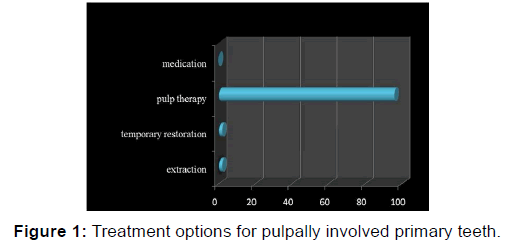
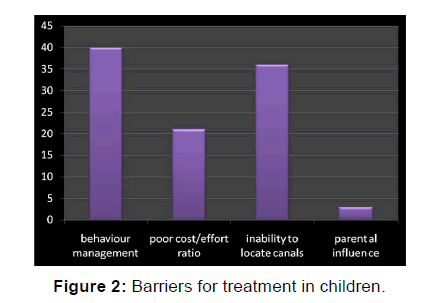
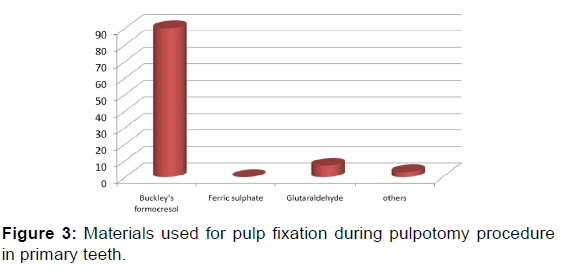
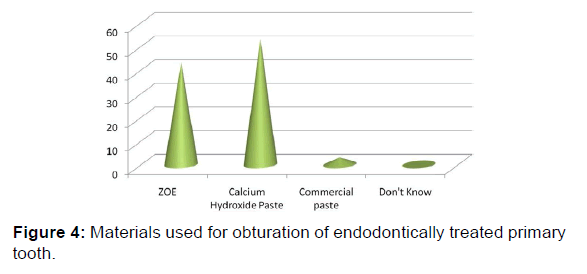
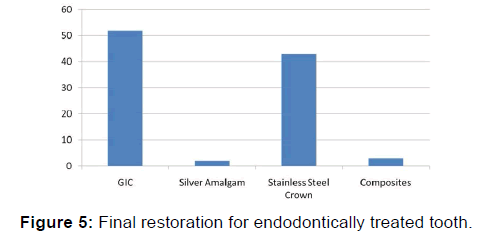



 The Annals of Medical and Health Sciences Research is a monthly multidisciplinary medical journal.
The Annals of Medical and Health Sciences Research is a monthly multidisciplinary medical journal.